Today, our journey leads us to a neighbour prefecture of Kyoto, to Nara. The picturesque, meandering train line is going next to a river through a densely-inhabited mountain region. At the train station, today we are welcomed by Fumiaki from the Suikyo tea garden. In the car, he tells us how far the tea bushes have grown this year already, and tells us about some new projects. He estimates that the harvest in their tea garden will start in about two weeks. Depending on how the weather develops in the next weeks, the first day of harvest will be between five and days later compared to the previous year.

First, we drive to the Miya-Yama area. Here, we meet Fumiaki’s father cutting grasses. Until the harvest, all fields must be as free as possible from grasses. In organic farming, where grass cutting is only possible by hand or with a string trimmer in the best case, this is a lot of work. In this tea garden parcel, Fumiaki shows us what they applied as fertiliser here: oak and sawtooth oak woodchips. He explains us that this kind of fertiliser is especially suitable for the production of withered tea and black tea. The wood comes from a forest located directly next to the field. This forest has been used and managed for generations. The trees are cut down in the age of 20 to 30 years, and then new trees are planted. The thick tree trunks are used for the cultivation of Shiitake. The thin side branches are choped and used as fertiliser for the tea fields. The thick trunks are cut into pieces of around one meter length and and Shiitake spores are inserted to the wood. After that, the trunks are piled up in the forest. Two years after putting in the Shiitake spores, the first Shiitake mushrooms can be harvested. After four years, the Shiitake mushrooms have almost completely decomposed the wood. Besides helping in the tea garden, Fumiaki’s father takes care of the Shiitake cultivation. For this, he prepares 3.000 trunks every year.
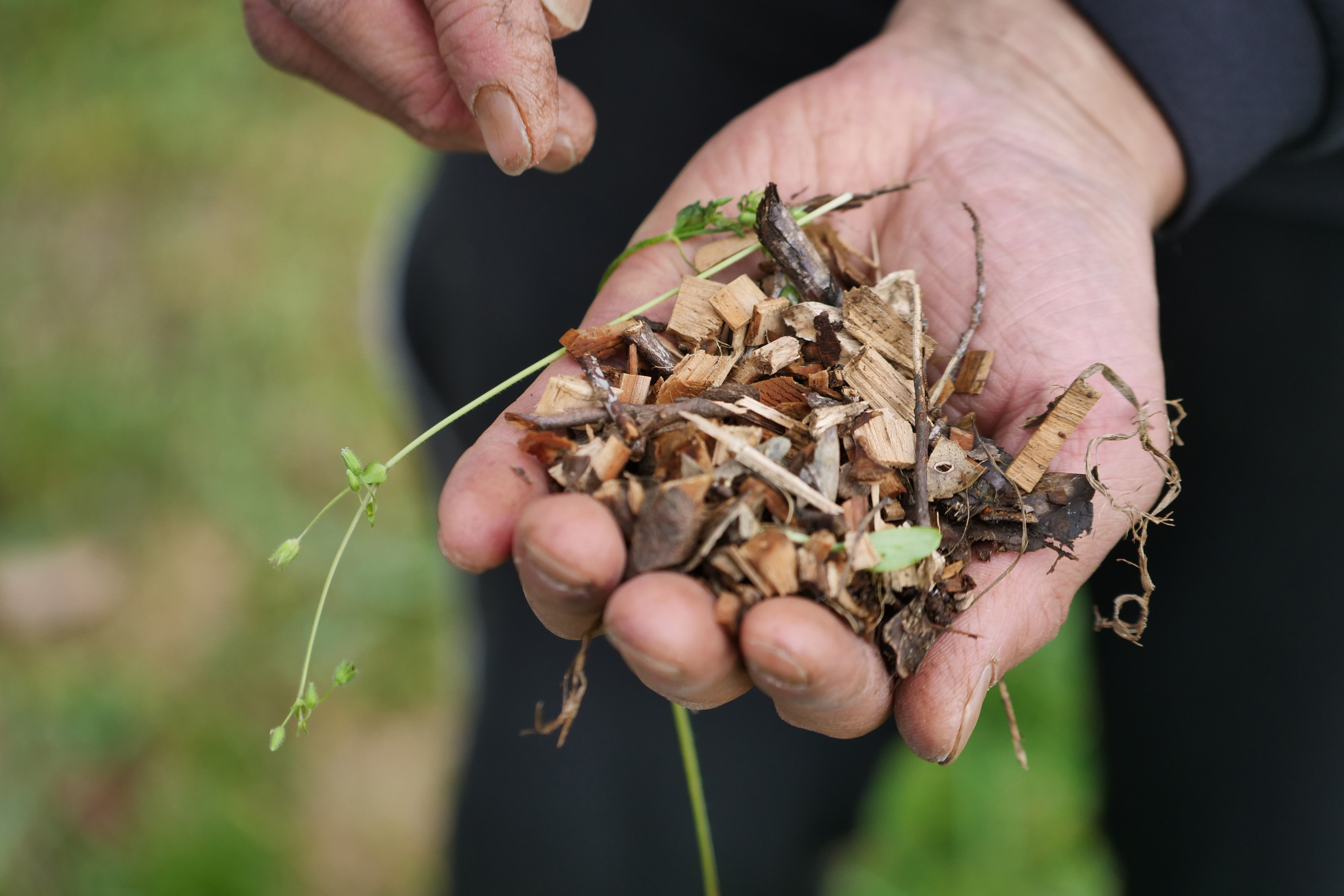
From the tea garden fields Miya-Yama there is a beautiful, far view. From here, we see a red-brownish parcel. This has been taken over by the Suikyo team a short while ago. In the conversion phase from conventional farming to organic farming, which takes three years, the bushes are completely cut down two times a year. The leaves and branches remain on the field. The Suikyo parcels which have been cultivated organically for years already, are only cut down completely once a year, in September. Then, the phase between September and the first harvest in May is decisive for the taste of the tea.
In some tea bushes, besides the tender new sprouts, we also see old leaves, which the plants have shed. Fumiaki explains us that in natural farming the plants shed the leaves which they don’t need anymore. In more intensive forms of agriculture, which use very strong fertiliser, this doesn’t happen.
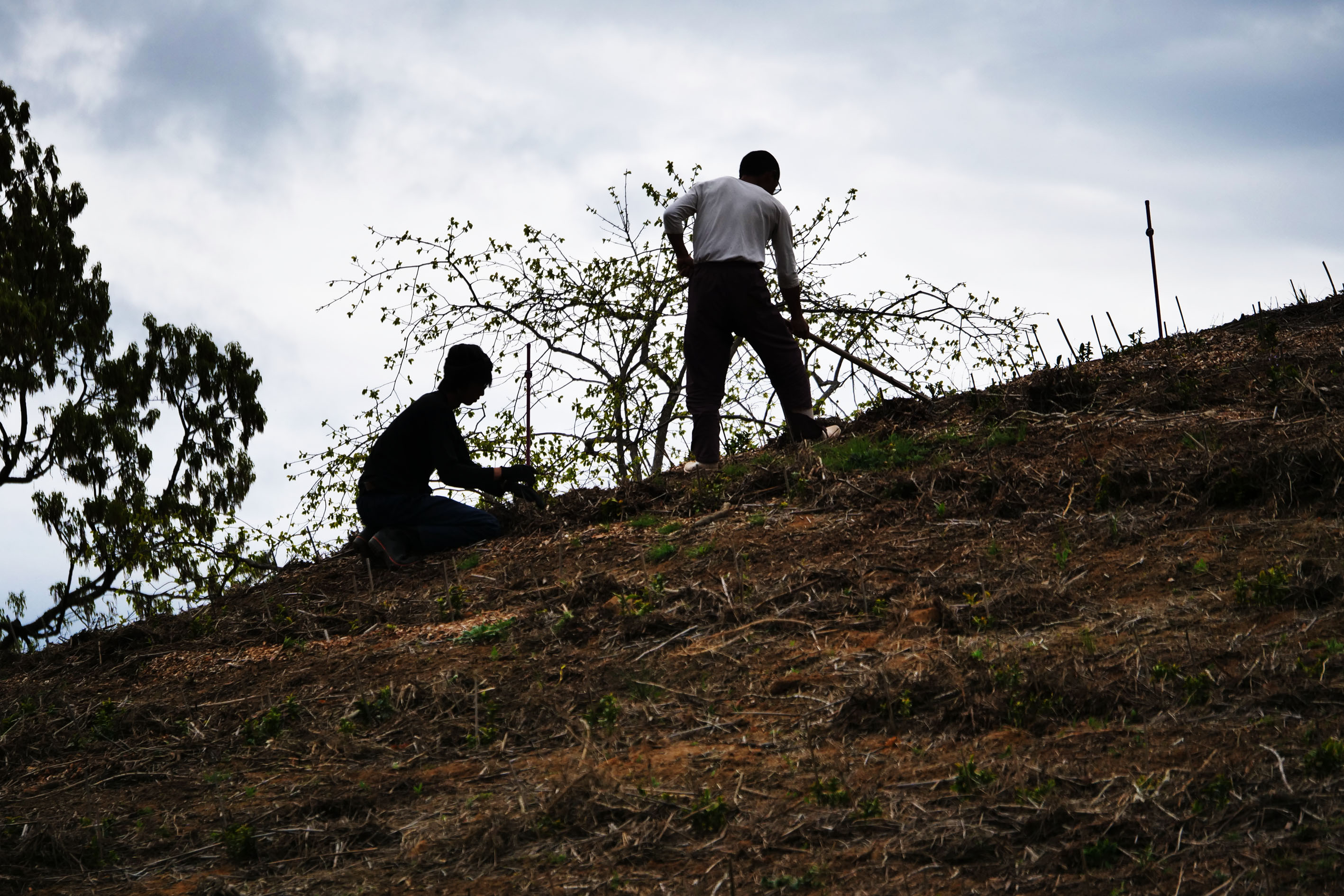
We drive on to a mountain slope. At its foot, there is a small parcel, where Luna, Fumiaki and the helpers put out tea seeds this year. Still, there is nothing to see here. A bit further up the hill, two helpers are busy uncovering the spots where seeds have been brought us last year. To protect them from wind and frost, Suikyo covered the place with cut grass and small branches. Apart of this, the parcel was changed as little as possible – no edges straightened, no surfaces levelled. The shape of the mountain is kept completely. Here, we can already see small plantes – six to eight per spot. Here, Mishou Beni Hikari bushes will grow in the future. This variety is especially suitable for withered and fermened tea sorts.
Fumiaki uses the term „ichou” for the process of withering. For Suikyo, “ichou” is defined as a process where the tea leaves lose some water and develop a intense fragrance without losing their green colour. This process takes places before the leaves are kneaded. Fumiaki uses the term “hakkou” for the fermentation of tea leaves – that is, the reaction with oxygen, which takes places after rolling, this means, the breaking of the leave cells. During this process, the colour changes into a reddish hue. The term “hakkou”, as well as the term “fermentation” indicate enzymatic processes.
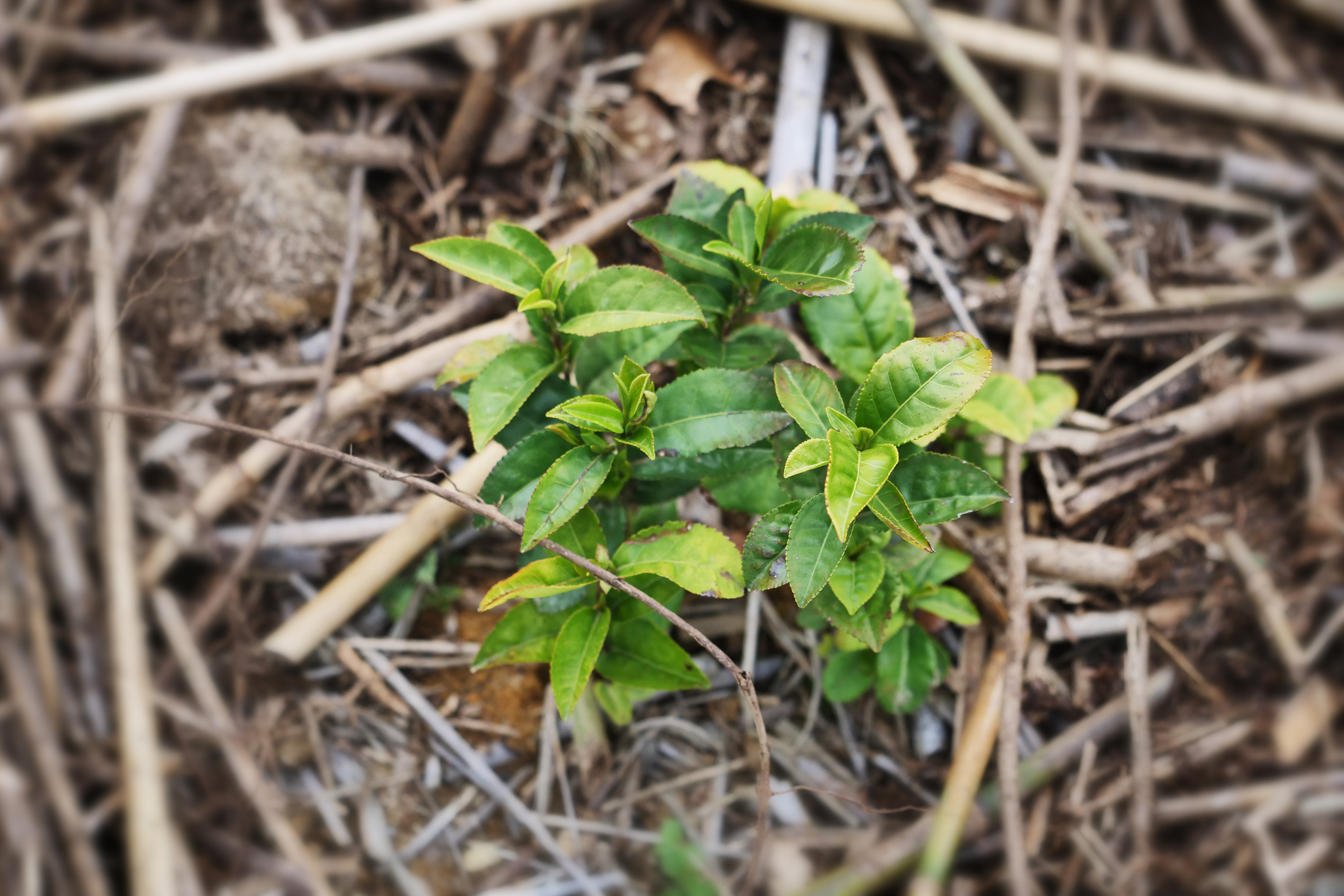
At each spot with six to eight small plants, the one plant which is most similar to the Beni Hikari is left in the ground. The other small plants are removed. Fumiaki takes out a young plant from the ground, which does not very similar to the Beni Hikari, to show us how the roots run. He explains us that the seed-grown tea plants, which are planted at the hill, built a especially strong, thick taproot. As mentioned, in this case it is not usual Zairai plants but post-selected Zairai plants, which thus are very similar to a certain variety.
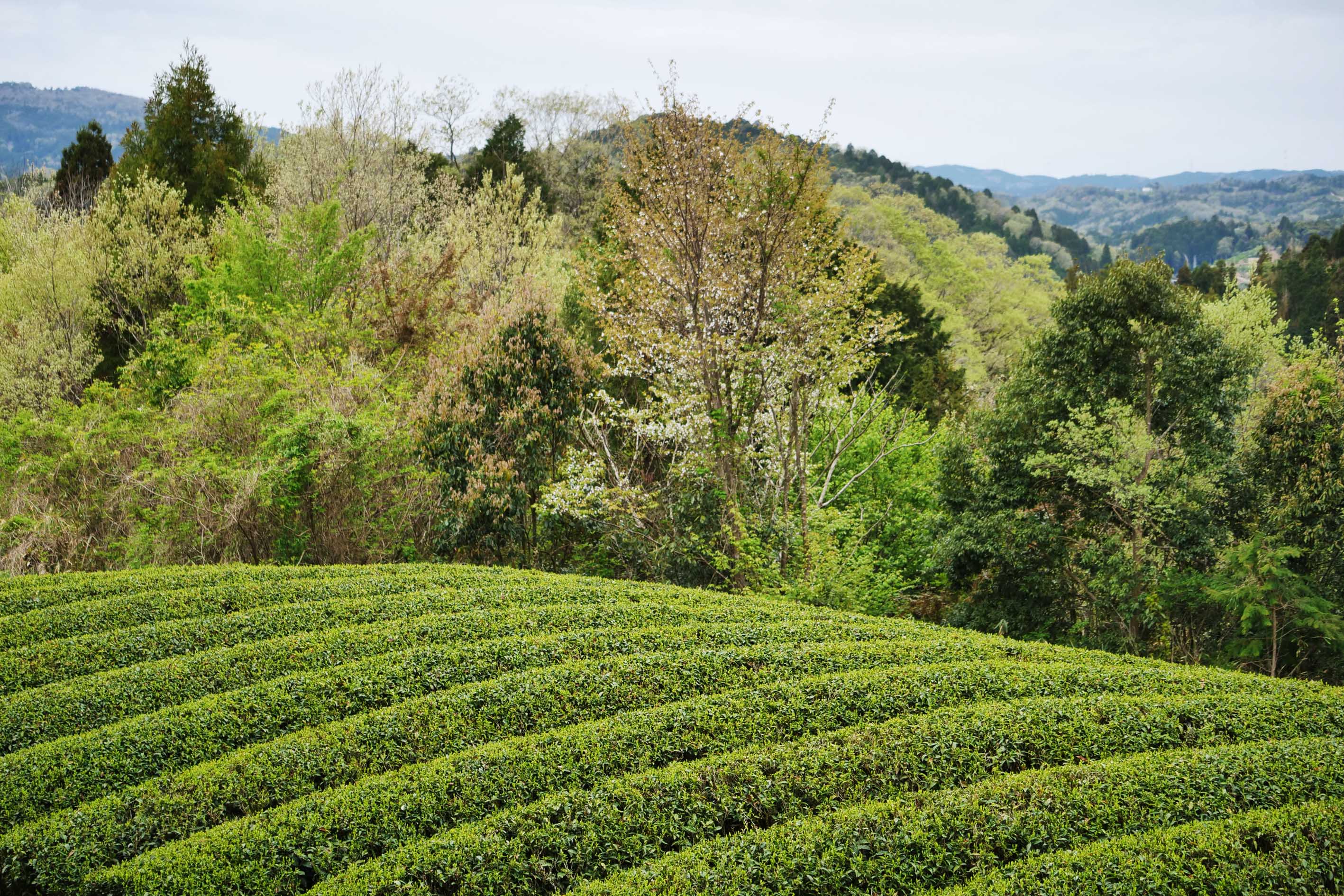
For the production of withered or fermented tea, locations with clayey soil are especially suitable. So, our next stop is the parcel where the leaves of the Suikyo Woodwind Oolong Tamaryokucha come from. It is a old tea mountain, which was not levelled. The original mountain shape and soil composition – clayey soil – was not essentially changed by human. The Yabukita bushes here were planted 45 years ago. For 30 years, this tea mountain has been cultivated organically, and for seven years it has been fertilised exclusively with plant material: leaves, grass, woodchips. For this reasons, according to Fumiaki’s experience, this parcel is excellently suited for the production of the withered tea “Suikyo Woodwind”.
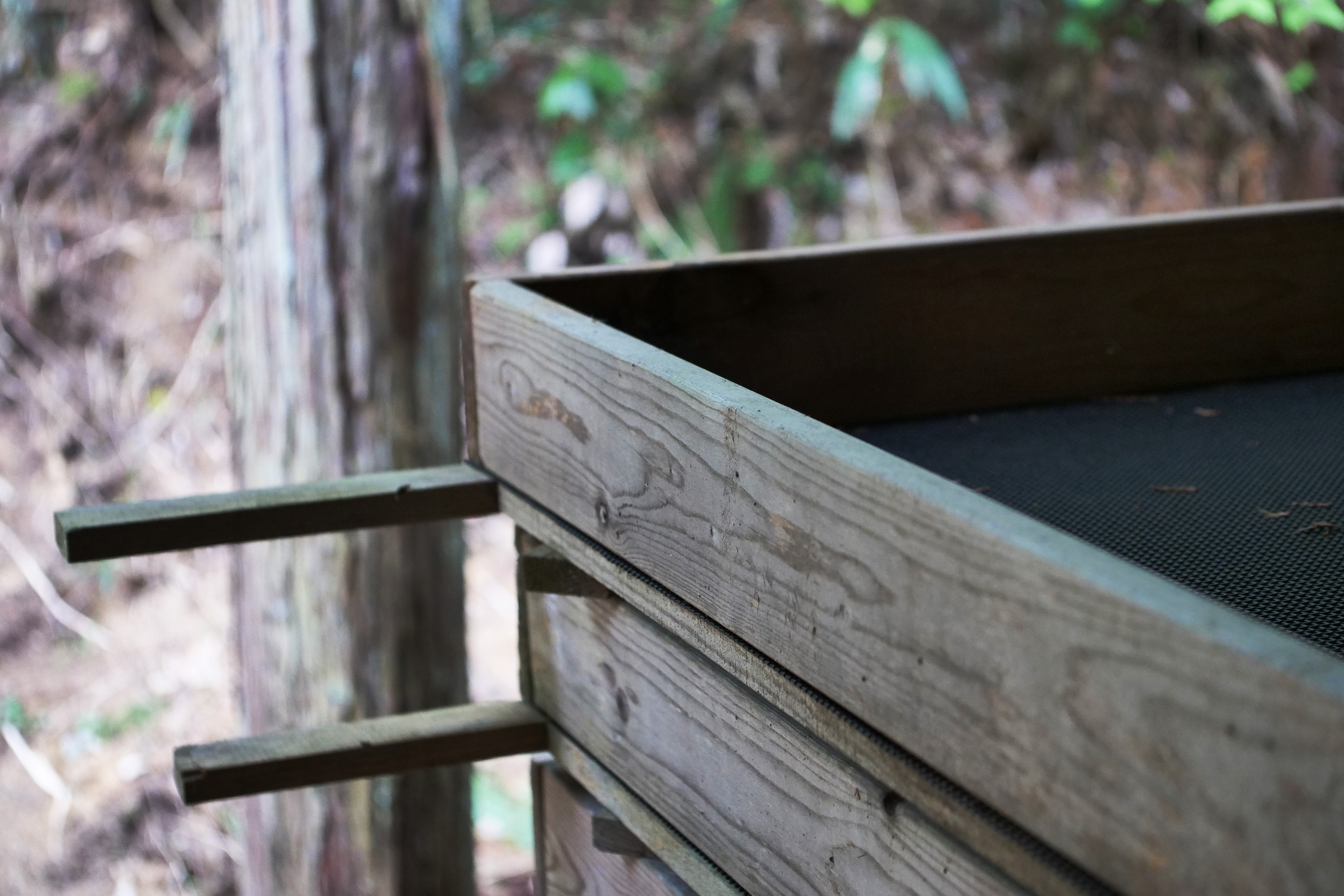
Our next stop is Suikyo’s small tea processing site, which is located at an idyllic place at the edge of the forest. Here, we also take a look at the place in the forest where they wither the leaves for the Tamaryokucha-related tea sort Suikyo Woodwind. Directly next to the manufacturing site, the path leads a bit up-hill. During harvest time, the wood frames with nets inside are lying here. They are used for withering the freshly harvested leaves. The leaves are harvested in the late afternoon and then carefully spread on the wood frames with nets inside. They remain piled up over night, under a roof next to the tea manufacturing site. In the following morning, the wood frames are carried to the forest, where they stay the whole day. In the forest it is cold and shady – perfect for a very gentle withering process. About three times the leaves are turned around and carefully stirred inside the wood frames, so the leaves can wither evenly. For the production of withered green tea, Fumiaki prefers withering in the forst to withering in ventilated containers. However, for the black tea production, which he also pursues, he withers the tea leaves in containers which are ventilated with a fan.

About afternoon, the withering scent reaches its peak. Then, the withered, fragrant tea leaves are brought to the tea manufactury and steamed very shortly (asamushi). Next, they are mixed up in a machine called „Soujuu-ki”. The Soujuu-ki is a drum with gripping arms inside, lined with bamboo inside. In this device, the tea leaves are mixed up, and then pressed to the bamboo-lined wall of the drum again and again by the arms. In contrast to the common way of green tea production, in case of the Woodwind there is no kneading. Thus, the leave structure is kept to a large extent. After the Soujuu-ki the leaves are put into a Saikan-ki and dried. Such a apparatus – also a bamboo-lined drum – is also used by Shigeru Morimoto for his GO EN Tamaryokucha. Junji and Yusuke Kadota also use the Saikan-ki for drying. After that, te leaves are dried in the Kansou-ki to their final stage. It’s a puristic way of producing – only the most important processing steps are carried out, and nothing unessential. This resembles mostly the production of steamed Tamaryokucha.
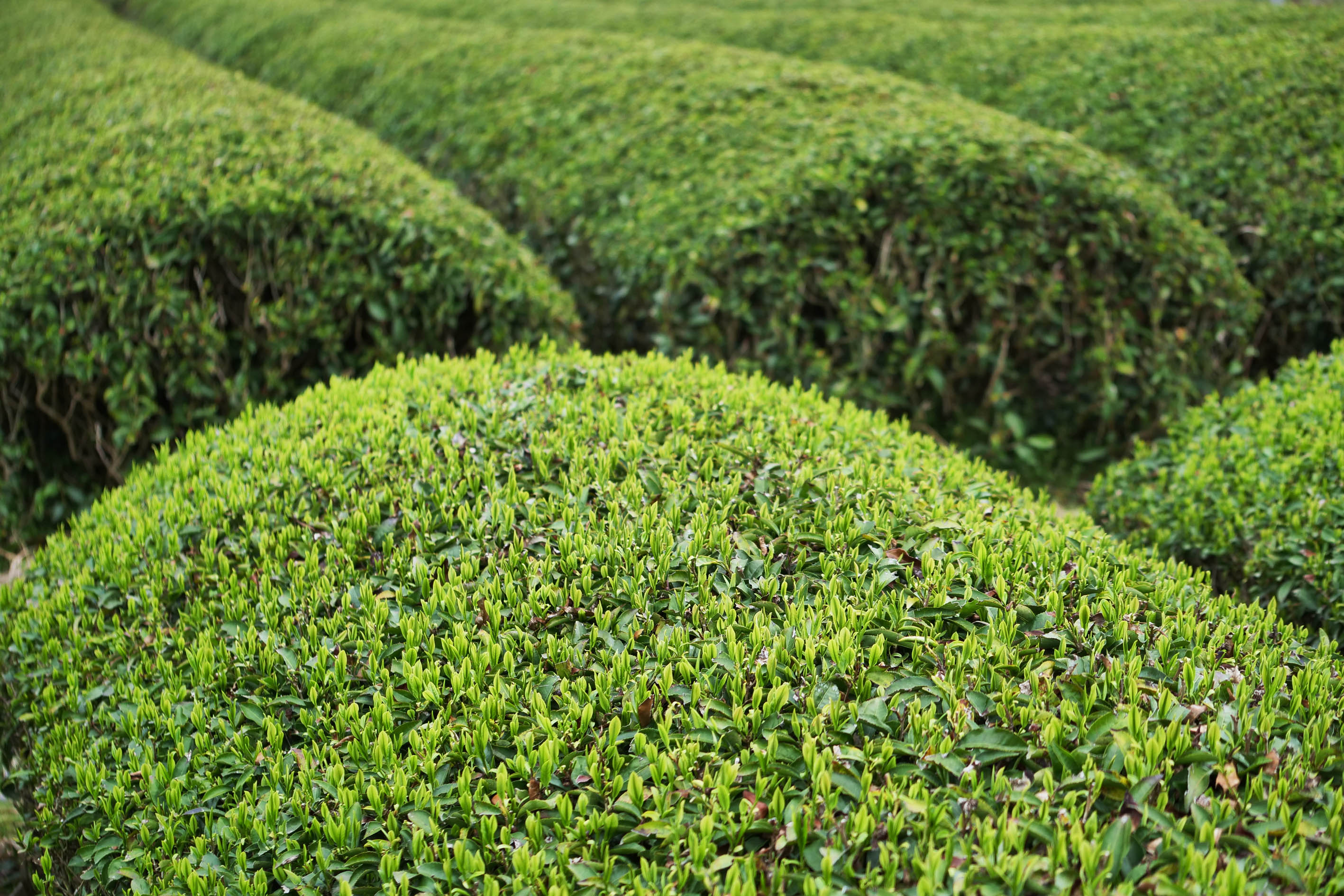
On the way from the tea manufactury to the residence of Fumiaki and Luna, we stop at a tea field, which Fumiaki’s father planted 35 years ago. It was a time when the local authorities converted more forest areas for agriculture. As this field was newly added to the tea garden, Fumiaki’s father thought he might as well try something new here. With this tea field, he started organic farming 35 years ago. Since then, they use only grass and some rapeseed pomace as fertiliser. On this tea field (tea field = levelled parcel, tea mountain = unlevelled parcel), they grow plants of the Yabukita variety and the Oku Midori variety. The soil is volcanic and contains granite. Fumiaki describes this soil composition as very suitable for the production of Sencha, that is steamed green tea which is usually not withered or fermented. He also observed that the tea leaves and also the infusion of a tea from a parcel with volcanic soil is rather green, while the leaves and the infusion of plants from clayey soil is rather yellow. The field described here – the oldest organic tea garden of Suikyo – is where the Suikyo Asamidori Sencha comes from.
In their residence, we also meet Luna and Yoko again, which also accompanied us last year in the tour through the tea garden. Together with Luna and Fumiaki, we drink the 2018 Suikyo Woodwind for the very first time, which after a bit less than one year of maturation has now reached its perfect condition to be released to enjoy. In contrast to normal tea production in Japan, Suikyo store their teas in a cooled storage for a while – months till years – to mature. We are delighted by the wonderful result.
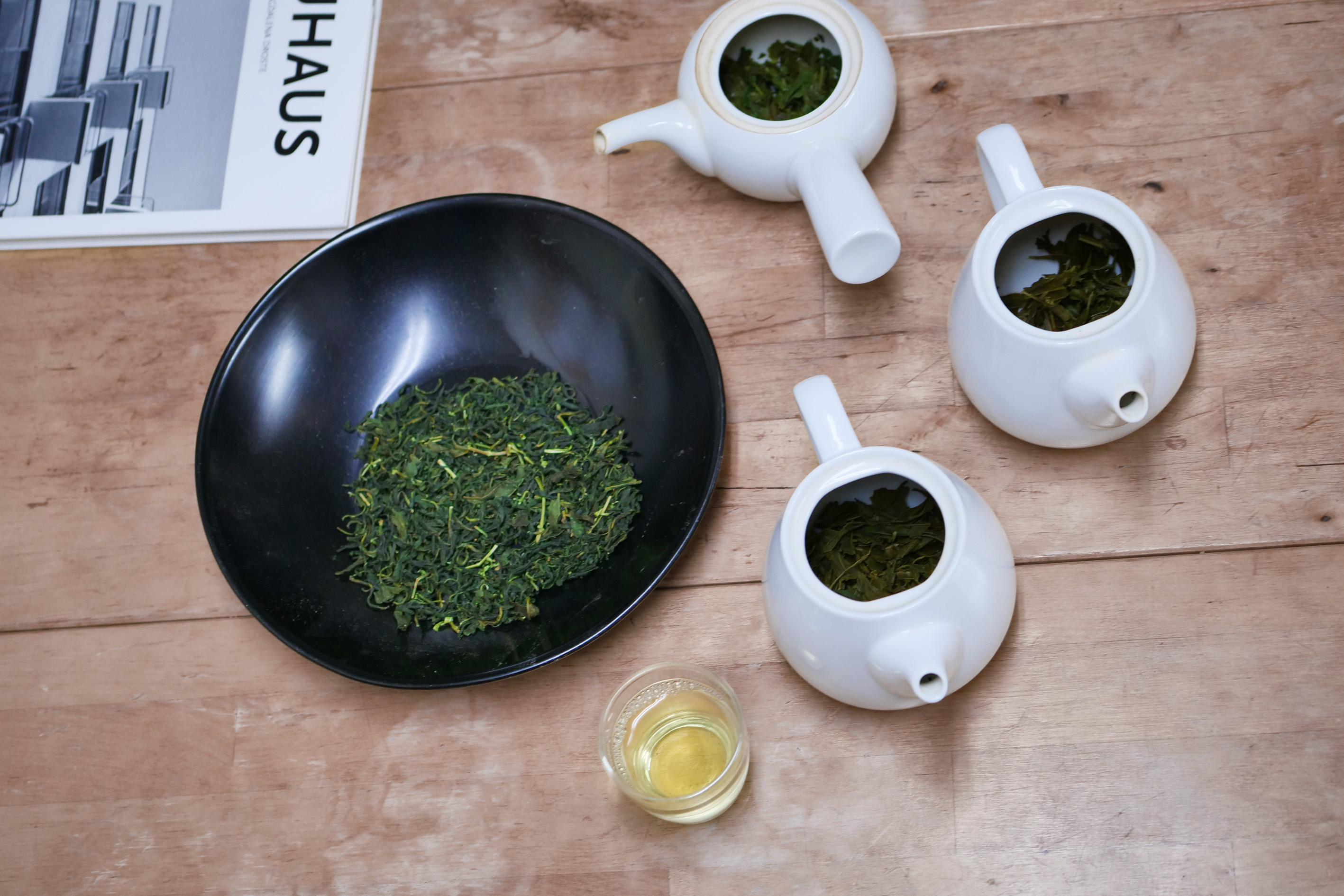
While we are excitedly following the interesting thoughts of Luna and Fumiaki, we drink one infusion after the other. Another highlight is a very exciting Oolong from 2013, which Fumiaki infuses for us. In that year, he made a small test production and he is curious to hear our opinion about it. This tea is not only withered but also slightly fermented. We are delighted. Deep fruity nuances are dominating the tea, paired with a slightly nutty aroma. We ask the two to produce this tea again this year, so that in a few years it will find its way to Europe. We will keep you updated.
For farewell, Luna gives us a Kyusu which is especially suited to infuse the Suikyo teas, and also a few tea samples, before we hurry back to the station. It has already darkened outside, and we are thankful that Fumiaki’s mother prepared some Onigiri for us. We were starving. But the visits at Suikyo are always so exciting that we completely forget the time while we are talking, and we are completely immersed in their world and their thoughts.